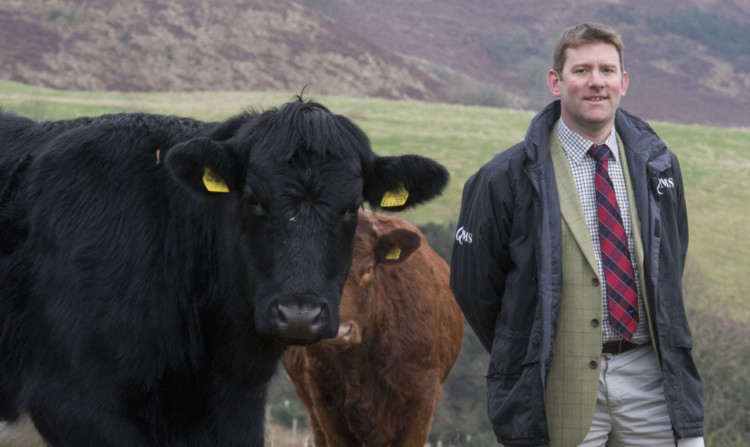Looking ahead to the next 12 months of activity, Quality Meat Scotland chairman Jim McLaren admitted there would be challenges.
However, he stressed that the levy-funded body had already refocused to meet them head on.
The main objective is not only to increase livestock numbers but to make sure that a bigger proportion of Scottish-reared cattle, sheep and pigs are slaughtered and processed north of the border.
The falling numbers of breeding stock across all three species affects QMS directly because of the reduction in levy income.
In the coming year, levies will bring in £4.1 million compared to £4.4m last year and £4.9m the year before that.
Scottish Government grants of £1.3m and support from the EU will allow for an external expenditure of £5.6m in 2014/15.
This is not a huge reduction on the £5.8m spend in the year just completed, but it does mean a certain amount of trimming of activities.
For example, there will only be one major Scotch Beef promotion campaign this year instead of two. Last year Scotland and Greater London were both targeted, but this season the effort will all be in the London area.
The loss of levy income, some £340,000 last year alone, can mostly be attributed to the pig and sheep sectors.
The closure of Vion’s Broxburn pork processing plant has been a major factor, accounting for £254,000 of the income drop.
Finished pigs have been heading south for slaughter and many Scottish-born weaners have been finished on English farms near the processing plants.
A large proportion of the Scottish lamb crop is also processed in English or Welsh abattoirs. This is a historic problem, with QMS chief executive Uel Morton estimating the total levy income foregone as around £1.6m annually.
“There are talks on levy repatriation but progress is slow,” he said.
Mr Morton did, however, hint that ongoing discussions were looking to ensuring that as much as possible of the lost levy was currently being spent on activities that would help Scottish meat sales.
“The development of the Brechin site for pig processing could help greatly in retaining levy,” added Mr Morton.
“The levy raised from pigs processed at Broxburn was about £880,000 and, although we are unlikely to see all of that coming back, increased throughput at Brechin could bring back about £600,000.”
There was also a loss of levy through store cattle heading south for finishing, but figures showed that this trade had reduced in the final six months of last year.
Some of these cattle would come back to Scotland for slaughter, with QMS able to collect the resulting levy.
Apart from the levy position QMS has a more pressing reason to see livestock numbers restored, according to Mr McLaren.
“Our abattoir operators continue to endure extremely tight margins and consolidation, leaving worryingly little capital for investment.
“Notwithstanding the recent reduction in cattle prices, the fact is that current livestock prices and reduced livestock availability mean that operating margins for Scottish processors remain extremely low.
“It is vital that our processors have adequate supplies of livestock to achieve the critical mass our red-meat supply chain needs to operate profitably and to ensure we are able to meet the continued increases in demand for quality red meat.
“To realise how important it is to have viable processors you only have to look at the Republic of Ireland, where purchasing power has become very concentrated.”
It was also imperative that QMS continued to monitor, and respond to, consumer purchasing trends.
The past 12 months have seen consumers continue to be careful about what they spend their money on and what they deem to be best value.
QMS will later this month be welcoming four new board members.
Prof Julie Fitzpatrick, chief executive of the Moredun Research Institute; Sarah Mackie, Aberdeenshire farmer and head of local sourcing for Tesco; Philip Sleigh, an Aberdeenshire pig farmer and George Milne, development manager of the National Sheep Association Scottish Region have all been appointed by Scottish Ministers.
They replace Prof Phil Thomas, Robert Parker, Andrew Peddie and Gordon McKen.
